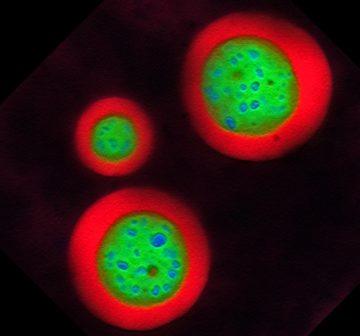Elie Dolgin in Nature:
 For years, if you asked a scientist how they pictured the inner workings of a cell, they might have spoken of a highly organized factory, with different departments each performing specialized tasks in delineated assembly lines. Ask now, and they might be more inclined to compare the cell to a chaotic open-plan office, with hot-desking zones where different types of cellular matter gather to complete a task and then scatter to other regions.
For years, if you asked a scientist how they pictured the inner workings of a cell, they might have spoken of a highly organized factory, with different departments each performing specialized tasks in delineated assembly lines. Ask now, and they might be more inclined to compare the cell to a chaotic open-plan office, with hot-desking zones where different types of cellular matter gather to complete a task and then scatter to other regions.
Everywhere scientists look in cells, throngs of proteins and RNA seem to be sticking together, coalescing into pearl-like droplets distinct from their surrounding environment. These dynamic compartments allow cells to perform essential functions, ranging from gene control and DNA repair to waste disposal and stress responses. They are often fleeting, and are unhindered by an enclosing membrane — unlike many other cellular components, such as mitochondria, which are membrane-bound. When a droplet is no longer needed, it vanishes.
More here.
